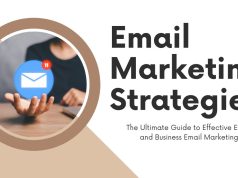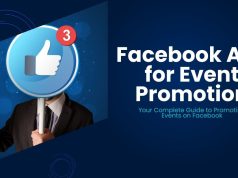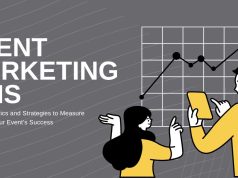Marketing a product effectively requires creative strategies, seamless execution, and the ability to grab your audience’s attention at the right moment. When it comes to product events, such as launches, demonstrations, or webinars, marketing automation can prove a game-changer. The ability to automate repetitive tasks, personalize experiences, and extract actionable insights from data empowers marketers to focus on creating impactful campaigns that resonate with their target audience.
Understanding Marketing Automation for Product Events
Marketing automation refers to the use of software platforms and technologies to automate repetitive marketing tasks, such as email campaigns, social media posting, and data tracking. For product events, automation allows you to streamline workflows, engage customers effectively, and measure results with precision.
Some typical use cases for automation in product events include:
- Event promotion via email and social ads
- Automated reminders to registered attendees
- Post-event follow-up emails with feedback requests
- Nurture campaigns for leads captured during the event
The beauty of automation lies in its ability to run processes seamlessly in the background, freeing up your time to focus on crafting strategies and building better customer relationships.
Key Benefits of Marketing Automation for Product Events
Before we get into the “how-tos,” let’s explore the major advantages of leveraging automation in your product event marketing campaigns:
Improved Efficiency and Time Management
Manually executing event promotion workflows is time-consuming. Automation tools handle tasks such as sending email reminders and social media posts, allowing your team to focus on event content and engagement strategies.
Increased Personalization
Automation allows you to customize event invitations, follow-ups, and communications based on audience preferences, behaviors, and demographics. Personalization improves engagement and boosts the likelihood of event attendance.
Lead Capture and Nurturing
Automated forms and follow-up campaigns make it easy to capture leads during sign-ups or during the event. Nurture these leads post-event using tailored email sequences to move them further along the sales funnel.
Consistent Messaging
Sending consistent and timely communications helps maintain your audience’s interest throughout the event lifecycle—from announcements to post-event feedback requests. Automation ensures no step is overlooked.
Clear Performance Metrics
Automation platforms provide robust analytics to measure the success of your product event campaigns. From click-through rates to form completions, you’ll have actionable insights to refine future events.
How to Leverage Marketing Automation for Product Event Success
Step 1: Plan Your Event with Clear Objectives
Marketing automation is only as successful as the strategy behind it. Begin by setting clear goals for your event. Are you launching a new product? Demonstrating a feature? Building thought leadership? Identifying your objectives will guide the type of automated campaigns you’ll create.
For example, during a product launch, your automation campaign may include:
- A countdown email campaign leading up to the release
- Social media reminders to boost attendance
- Personalized emails thanking attendees after the event with product links
Tip: Be sure to identify your target audience and segment it within your automation tool. This segmentation will help deliver the right message to the right audience.
Step 2: Use Automated Email Campaigns for Invitations and Reminders
Email remains one of the most effective communication channels for events. Use automation to send targeted, engaging invitations and follow-up reminders.
- Event Invitations: Create an automated email workflow sending personalized invitations with clear details (e.g., event date, time, registration link). For segmented audiences, customize messaging to highlight benefits specific to their interests.
-
- Event Countdown Reminders: Automate a series of reminder emails leading up to the event. For example: – One week before, Event details and reasons to attend. – Three days before, how to prepare for the event. – One day before, don’t forget! Registration closes soon.
Make sure these emails include proper calls-to-action (CTAs) such as “Reserve Your Spot” or “Register Now.”
Step 3: Streamline Landing Pages and Sign-Up Forms
Use marketing automation tools to create dedicated landing pages for event registration. These pages should be visually engaging and include:
- Sign-up forms integrated with your automation platform
- Strong CTAs that emphasize urgency (e.g., “Seats are Limited!”)
- Details about the event, such as the agenda, speakers, and benefits of attending
Automation ensures that data collected via these forms is stored and segmented for future workflows, including post-event follow-ups.
Step 4: Automate Social Media Campaigns
Social media is invaluable for attracting registrants and building buzz for product events. Use automation platforms like Buffer or Hootsuite to schedule a post series across relevant platforms.
- Announce your event starting with a compelling teaser.
- Share regular updates leading up to the event, such as speaker details, event countdowns, or sneak peeks of product features.
- Use paid ads with automation targeting options to reach broader, relevant audiences.
Tip: Don’t forget to incentivize sharing! Ask your followers to share the event on their feeds, and consider offering special perks in return.
Step :5 Nurture Leads and Engage Post Event
Once the event is over, the real work begins! Follow up with attendees and leads using automated campaigns to keep them engaged:
- Send thank-you emails with event recaps or recordings.
- Distribute a survey to gather feedback.
- Provide attendees with exclusive discounts, bonus content, or sneak previews (if applicable).
- Use lead scoring (available in some automation tools) to prioritize high-potential leads for personalized follow-ups by your sales team.
Tip: Use the data captured by your automation tool during registration (e.g., job titles, industry) to segment post-event campaigns effectively.
Step 6: Use Data to Analyze and Perfect
Marketing automation solutions offer robust analytics that track conversion rates, email performance, lead generation metrics, and more. Review this data to understand what worked well and where there’s room for improvement.
Key metrics to evaluate include:
- Open and click-through rates of event emails
- Registration numbers
- Attendance rates
- Post-event engagement (webinar views, survey completions)
Armed with these insights, refine your strategies for future events.
Top Tools for Marketing Automation in Product Events
There’s no shortage of marketing automation tools to choose from. Here are a few options to consider:
- HubSpot is an excellent all-in-one platform for managing email workflows, landing pages, and analytics.
- Mailchimp is Ideal for email campaigns and targeting, with a user-friendly interface.
- Marketo is A powerful tool for advanced event management and lead nurturing.
- Zapier: Create custom workflows that connect your favorite apps and platforms for seamless automation.
- Eventbrite is A dedicated event tool that offers promotion and attendee analytics.
Transform Events into Opportunities
Marketing automation transforms product events into well-oiled machines, driving attendance, improving engagement, and ensuring lasting impressions. Whether you’re hosting a launch, webinar, or demo, following these automation strategies will enhance your results and free up valuable time to focus on your core marketing goals.
Are you ready to simplify your product events workflow and boost effectiveness? Explore automation tools that fit your business and elevate every aspect of your marketing strategy.









